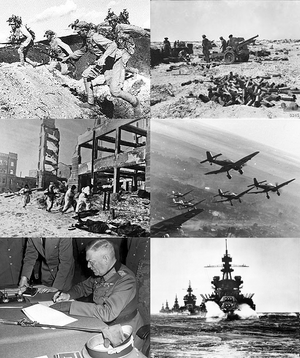Throughout film history, audiences have rooted for the protagonists who were the true “heroes” of the story. However, as the world faced challenges and innocence soon diminished, audiences yearned for characters who showed human weakness and venerability-- someone who was more human. This character rose in cinema and became known as the anti-hero. “What is it?”, you may ask. An anti-hero is "a protagonist of a drama or narrative who is notably lacking in heroic qualities" (1).
World War II played a major role in influencing the rise of the American anti-hero in cinema. The first reason was that America wanted new kinds of heroes because America was seriously traumatized after the war. The second reason was that citizens wanted the protagonists “to rebel against the status quo” (1). Thirdly, people wanted heroes with human qualities, “who were true representations of life, who were faulty and vulnerable” (1). Lastly, America wanted its heroes to reflect the true American spirit, no matter they were good , bad or ugly.

In the 1940s and 1950s, the anti-hero became popular due to the cynicism during and following World War II. People were relating to the anti-hero “who was not involved in world problems but devoting his time to overcoming hisown personal problems" (2). Duel in the Sun and The Best Years of Our Lives demonstrated that America after the war was not always a happy go lucky place, and happy endings were rare.
John Garfield could be argued as the creator of the anti-hero. His characters were more relatable to real life. "The anti-hero was daring the audience to relate to doing wrong or being wrong even for the wrong reasons" (2). Watching a character commit wrongdoings makes us reflect on our own failures to encourage us to do the “right thing”.

The Cold War created a sense of fear and hate in the people the 1950s. People were paranoid in this atmosphere of hostility with Russia. Filmmakers thus had characters “embrace the duality in the nature of man” (3). Character could then show good and bad characteristics. In the second half of the 20th Century, America was rebelling against Communism and aggressors in Vietnam and Korea, which influenced the anti-hero to be rebellious as well. “The rebel anti-hero was rebelling against the American standard, and America itself was born through rebellion and revolution” (4). Rebellion became a new standard in cinema.

The Anti-hero contradicts the Classic Hollywood Ideology because the anti-hero is more realistic and shows human flaws. The traditional hero is supposedly ‘perfect and good’. However, as America experienced WWII, the Cold War, and domestic revolutions, audiences wanted a type of hero that depicted their time period. They desired a character that made mistakes and reflected true human nature. People wanted to see the darker and cynical side of human nature after experiencing the horrors of war. An anti-hero creates a sense of realism through their character. Classic heroes intentional attempt to do good deeds whereas the anti-hero performs good deeds, but may do them in illegal/ immoral ways. “Anti-heroes became these altruistic characters that were supposed to be representations of real people...”(6). I personally prefer anti-heroes to classic heroes because they have more depth and are more compelling to watch on screen.


No comments:
Post a Comment